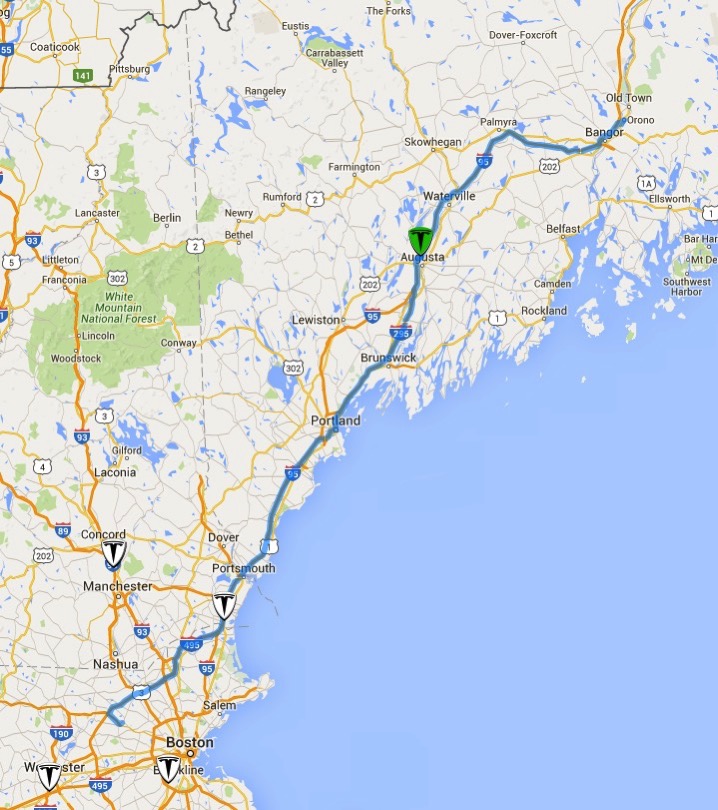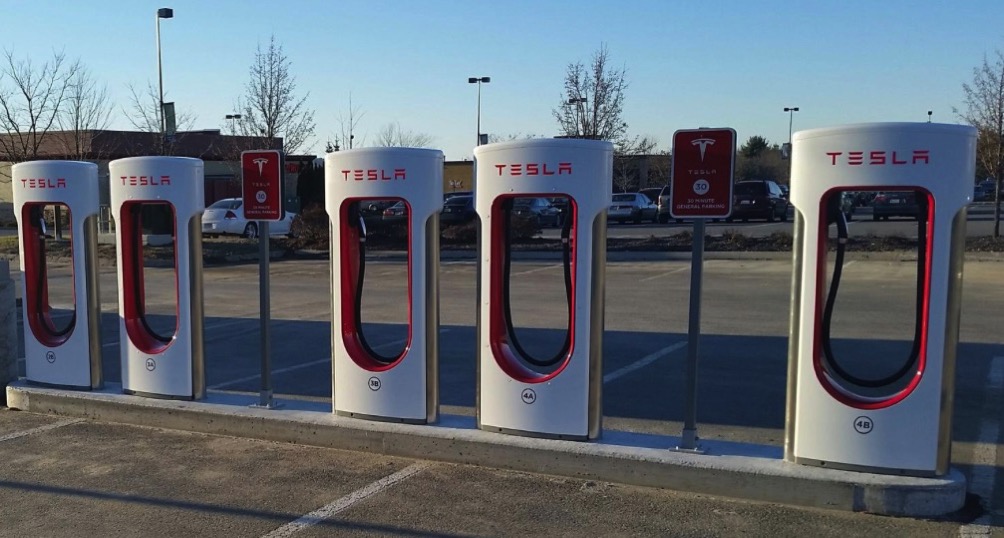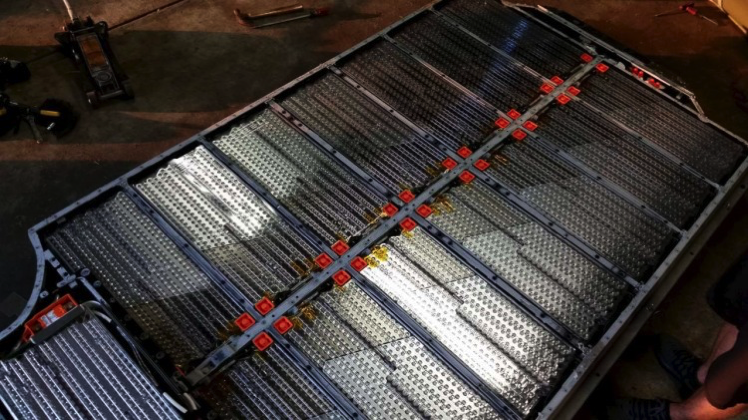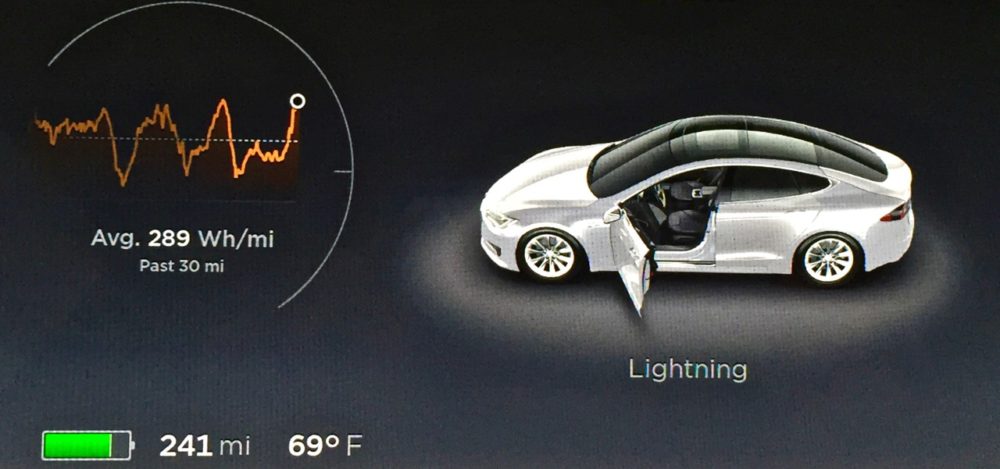For Father’s Day weekend: planning a 500-mile Tesla shakedown cruise. carlhowe.com/blog/road-trip…
Daily Archives: June 17, 2016
Road Trip to Maine and charging from sunshine

Son David and I are driving to University of Maine at Orono on Saturday for student orientation. That’s a trip of just over 250 miles each way, and we’re taking the Tesla on a shakedown cruise.
Howe’s first rule of Tesla driving: Plan the trip like a pilot would (full disclosure: I earned a private pilot’s license about 40 years ago, but most of the lessons are really good for many life situations). Good pilots think running out of fuel during flight to be the making of a very very bad day. The same should be true for Tesla drivers. That means planning refueling stops and always keeping a reserve for emergencies. My planned reserve is 20% battery or about 60 miles. Therefore, while my 90 kWh battery is rated for 293 miles, my planning battery size is 80% of that or 234 miles.
The map above shows the results of planning the trip through EVTripPlanner.com and PlugShare.com. The trip from our house will be 253 miles each way. Two superchargers (high speed chargers dedicated to Teslas) are along our route: Seabrook, NH, and Augusta, ME. Augusta is 172 miles away, which fits nicely within my 234 mile planning range, so we won’t need Seabrook; Augusta, ME will be our first stop.
I’m only targeting 172 miles of range on this first leg, so I’m not going to charge my battery to its full capacity; 100% charging cycles stress the battery a little and may decrease its lifetime. I normally charge to only 80% around town, but today, I’m charging the battery to 90% for the trip. I’ve adjusted the charging rate so that the car will top off from our 9 kW solar array today and consume no grid power. We’ll make the trip tomorrow entirely on sunshine, because Tesla installs solar arrays for its superchargers as well.
 Once we hit Augusta, our planned itinerary is to travel to UMaine Orono, which is another 84 miles. I’m not staying on campus, so I have to make a 22 mile round trip to my hotel in Bangor. Then, because there are no superchargers in Orono, we have to have enough range to make it the 84 miles back to Augusta. Let’s see: 84 + 22 + 84 = 190 miles. That’s within my 234 mile planning range.
Once we hit Augusta, our planned itinerary is to travel to UMaine Orono, which is another 84 miles. I’m not staying on campus, so I have to make a 22 mile round trip to my hotel in Bangor. Then, because there are no superchargers in Orono, we have to have enough range to make it the 84 miles back to Augusta. Let’s see: 84 + 22 + 84 = 190 miles. That’s within my 234 mile planning range.
That said, I want some extra padding in case we want to make a side trip or two, so our plan is that we’ll charge to the full 100% battery capacity at Augusta. Charging up to 100% takes a lot longer than just 80% because the last 20% is done at a lower rate to protect the battery, but the superchargers are really fast for the first 80%. While we could get a 50% charge in about 20 minutes, I’m budgeting about an hour to get a full 100% charge from the supercharger. That should be plenty of range for our roughly 24 hours in Orono and Bangor, and should bring us back to Augusta on Sunday with something like 90 miles or 30% charge left
When we hit the Augusta charger on Sunday, we’ll only be 172 miles from home, so we won’t need a full charge, so we’ll likely just charge to 90% again, which should only take about 40 minutes or so.
Howe’s second rule of Tesla driving also comes from flying: Always have a backup flight plan. I’ve got a few for this trip:
- RV campgrounds. Should the Augusta supercharger be down (unlikely) or we run short of range in the area around Orono, my backup plan is to check into Paul Bunyon campground in Bangor for a few hours and make use of their 240-volt 50-amp service. That will add range to my car at the rate of 29 miles per hour of charging. It’s not my first choice because adding 100 miles of range would take about 4 hours, but it would work in a pinch.
- The local Nissan dealer. Nissan sells the Leaf electric car and provides charging facilities for them and to the public. I could stop at the Bangor Nissan dealer, and take advantage of its J1772 charger (Tesla supplies an adapter), although that wouldn’t really be any faster than the RV park. It’s a backup plan but I feel like it’s also a bit tacky to take advantage of another EV manufacturer’s charging infrastructure. Consider this a backup to the backup.
- Dunkin Donuts. I could also stop at the Bangor Dunkin Donuts in Bangor for some 240 volt EV service, but it will only charge at 2 amps instead of 40. That would take a lot longer than the campground, but it is free.
- My hotel. If you ask nicely, often hotels will let you plug into one of their 110-volt outlets for a charge. I’ll only be at the hotel about 8 hours, and 110-volt outlets only add about 3 miles of range every hour. Still, if I were desperate, another 24 miles of range might allow me to get to a faster charging system somewhere else. This is, in my view, an absolutely last resort option.
By the way, if you’re not into detailed trip planning, Tesla makes it easy for you to improvise trips like this. Tesla’s on-board navigation system will automatically route you through superchargers and will alert you if your route or range falls below the distance needed to drive to the next charger. I can also pull up PlugShare on the in-car Web browser if I want to research other charging options.
Bottom line: We will have plenty of charge for all our planned stops, we have 20% of our charge reserved for contingencies, and we have backup plans if things go south. This should be a lot of fun and no stress.
For anyone wondering what it’s like to order and w…
Status
For anyone wondering what it’s like to order and wait 10 weeks for a Tesla, I wrote a 3-part series on it. carlhowe.com/blog/getting-t…
Part 3 of the purchase process: Patience

Every Tesla owner will tell you that the most painful part of the purchase process is waiting for delivery.
For people more used to going to a dealer’s lot and picking out a car, it may seem crazy that Tesla buyers are willing to wait anywhere from 6 to 26 weeks to be able to buy an expensive electric car. While the Tesla factory is presently making 2,000 model S and X cars every week, roughly double of what Tesla achieved in 2015, every Tesla buyer has to wait in the production queue for their car. There are no cars on Tesla lots for you to choose from; everyone has to wait for their new Tesla.
Said another way, despite doing no advertising whatsoever and doubling production capacity each year, Tesla sells every car it can make with no discounts and still maintains a nearly 2 month backlog of orders.
Here’s how my delivery evolved. Because of a pending business trip, I had ordered by car in early April and hoped for delivery in May. My actual timeline was:
- 2016-04-01: Order entered and deposit paid
- 2016-04-04: Order modified from S70D to S90D
- 2016-04-08: Order committed to production queue and VIN number assigned
- 2016-05-24: Production start
- 2016-05-30: Production complete
- 2016-05-31: Car in transit
- 2016-06-07: Car arrived in Dedham
- 2016-06-09: Final payment made
- 2016-06-11: Car delivered and accepted
In summary, my car took 72 days from order confirmed to delivery, or roughly 10 weeks. Once I had a VIN committed, Tesla had given me an estimated delivery date of late May-early June. On production start, that changed to June-early July, but I think Tesla was simply being conservative about how long it would take to batch up my car with others going to the East Coast and actually transport it (it can take 3 weeks, depending on rail and truck schedules).
The mean time between order confirmation and delivery during April through June was only 45 days, so clearly my 72 day production time was a bit of an outlier. I attribute that to the fact that I had bought during a model design change. I originally was scheduled to get a model S version 1, and what I actually received was a version 2. Clearly the production line must have had some slowdowns to accommodate the production changes.
The best thing about the ordering process is that Tesla assigns you your own Web page for your car and updates that regularly. To smooth the delivery process, you upload all your documentation to that page for the delivery specialists to work with, and they in turn provide you with instruction manuals, videos, and updates on the delivery process. While it was a very long 10 week process, I felt like Tesla kept me informed and made the process as painless and efficient as possible. I used that information to have substantive conversations with the delivery specialists along the way, and when delivery day rolled around, I felt like I was ready. For an expensive car ordered over the Internet, it’s probably the most relaxing experience I can imagine.
The bottom line: Just like Heinz Ketchup, ordering a Tesla requires patience, but it’s worth the wait.
Part 2 of the purchase process: Decisions, decisions

Ordering my car on April 1 was just the beginning of my Tesla odyssey.
When you order a Tesla, you automatically get 7 days during which you can change your order without penalty. And over the weekend of April 1, I began to wonder if I’d ordered the right car.
What started me having second thoughts was that my Tesla salesperson notified me that a silver fleet vehicle (I was insisting on the metallic silver paint, which is rather uncommon for Teslas) car that was configured almost identically to what I had ordered had become available. There were, however, a few differences:
- It had 2,049 miles on the odometer already. The car had been delivered on December 31, 1995 to Las Vegas for use in Tesla’s fleet of demos and loaners, so it already had some miles on it.
- It would come with a $6,800 discount. Because it was a fleet vehicle, it would be sold as new, but would be discounted off the list price.
- It had a 90 kWh battery and a panoramic roof option. I had ordered a 70 kWh battery without the fancy glass roof, but I could get roughly 28% more range by buying this fleet vehicle and paying a bit more (well, really about $13,000) than what I ordered. Given that the value of an electric car is in many ways tied to its range, this was tempting even though it was more.
- It was available immediately. If I were to buy this vehicle, I’d only have to wait for it to be shipped to me from Las Vegas. Compared with the 6 to 10 week waiting period for a custom build, this was also tempting.
I asked my salesperson if he could hold the car over the weekend while I thought about it. He said he couldn’t; because of their discounts, fleet vehicles rarely were available for more than a day or two. So I said I’d hold off, but ended up calling back the next day and asking if the fleet vehicle was still available. As my salesperson had noted, this was too good a deal to last long–it had been sold within hours of being listed. So I was back to my custom order.
There was only one problem: the opportunity to buy a big battery car had now whetted my appetite for a max-range vehicle. The S70D was rated at around 240 miles range while the S90D was 293. That extra 50 miles seemed like a nice margin to have because:
- Most of our foreseeable trips were in the 250 mile range. When we looked at our travel patterns over the past few years, we’ve been driving to colleges such as the Culinary Institute of America (200 miles), The University of Vermont (240 miles), and the University of Maine (256 miles). With a 250 mile battery, those will all demand at least one supercharger stop. With a 290 mile battery, one stop would be enough, and if we had to, we could hypermile the entire trip without a stop.
- You never drive in optimal conditions. Just as you rarely get the advertised fuel efficiency in an internal combustion engine car, similarly, you rarely get the full range out of your battery either. Once again, the big battery would just give us more comfort driving in winter or during bad weather when we really don’t want to get out of the car.
- We’ll mostly be using 60% of the battery’s capacity. You get the longest life out of an electric car battery if you run it primarily between 80% and 20% charge. That means that if we have to drive the car for an unanticipated trip, the expected range for the S70D will be more like 144 miles for the S70D and 176 miles for the S90D. Admittedly, we still would have 50 to 60 miles in reserve in both cases, but it seemed more prudent to have our everyday range be closer to 200 miles than 150.
- A big battery charges faster. This was a little non-intuitive, but it makes sense. Charging at a supercharger on the road happens fastest up to the 80% mark. After that point, the charging rate decreases rapidly to avoid overcharging the battery. What this means is that when we are traveling roughly 200 miles between superchargers (they are often closer together than that), we’d be spending longer at the supercharger stations with the small battery than with the big.
- The battery will degrade with time. The small battery will be just fine the first year we own the car, but we know that batteries degrade over time. If I assume that the battery will degrade about 3% a year (I made up that number), then I’ll have only 86% of the original battery capacity in 5 years. Given that I kept my last car for 15 years, a bigger battery to start will give me more lifetime to the car without being range constrained.
Ok, so maybe I overanalyzed this a bit. But at the end of the day, I decided that if I was going to invest in going electric, I should commit fully to having the best electric experience I could.
As it turned out, Elon Musk confirmed that we’d made the right decision not to get the fleet vehicle. Along with the Model 3 announcement on March 31, Musk announced that the Model S was getting a minor facelift, some new features had become standard, and the prices were going to increase slightly. Anyone with a model S already on order would get these new features at no extra cost. And I had an order in the system.
After all my battery analysis over the weekend, I changed my order to an S90D on Monday, and by that Friday, my order was committed to the factory order and provisioning queue. Now the waiting really began.
